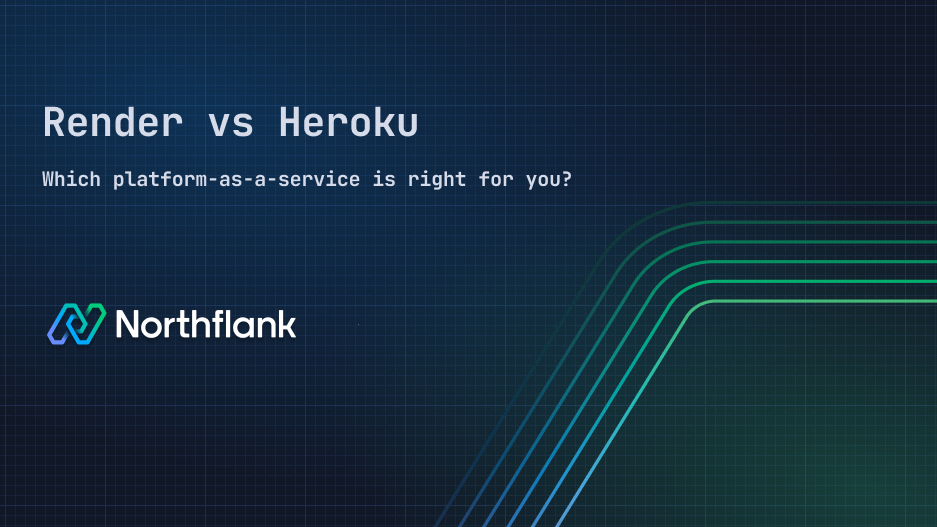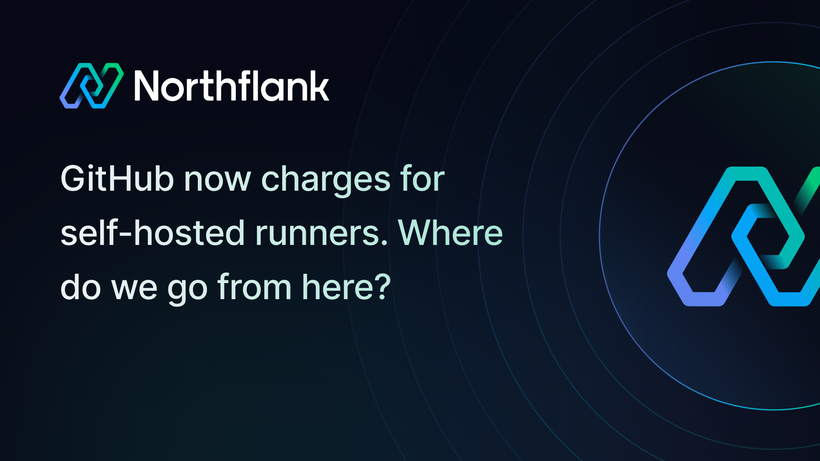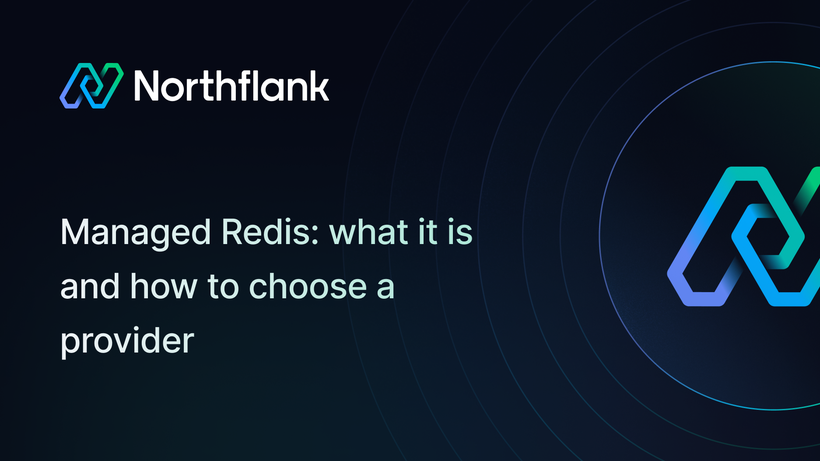

Render vs Heroku: Which platform-as-a-service is right for you in 2025?
Developers want to spend their time shipping applications, not wrestling with infrastructure. Platforms like Render and Heroku promise exactly that: simplified deployments, effortless scaling, and freedom from server management headaches. This promise of simplicity is precisely what every engineering team aspires to achieve.
However, choosing the right platform means balancing convenience against potential limitations as your app evolves. Let's dive deeper into Render and Heroku, explore their strengths and weaknesses, and introduce an alternative designed specifically to grow with your workloads.
Heroku revolutionized web deployment when it launched in 2007. Its innovative git push deployment method simplified app deployment dramatically, allowing developers to focus solely on writing code. After being acquired by Salesforce in 2010, Heroku expanded its ecosystem significantly, offering a robust marketplace of add-ons for databases, caching, monitoring, logging, and more.
- Git-based deployments
- Dynos (containerized runtime environments)
- Extensive marketplace for add-ons
- Simple web UI and CLI
Render, founded in 2019 by a former Stripe engineer, positions itself as a modern successor to Heroku. It offers a more diversified set of integrated services, modern container-based infrastructure, and an attractive pricing model to appeal to newer, growth-oriented teams.
- Container-based infrastructure
- Built-in support for cron jobs, background workers, and static websites
- Automated SSL and DNS management
- Integrated CI/CD pipeline
| Feature | Heroku | Render |
|---|---|---|
| Ease of use | Excellent usability; simple CLI and UI | Equally intuitive; slightly broader service offerings |
| Pricing at scale | Quickly becomes costly; limited control over expenses | Competitive initially; still expensive at higher scale |
| Complex workloads | Struggles with complex architectures and microservices | Handles basic complexity better, but still limited |
| Infrastructure control | Limited visibility and control | Limited visibility; slightly more modern infrastructure |
| BYOC support | No BYOC support | No BYOC support |
| Graduation problem | High likelihood of outgrowing platform | Still likely to outgrow, but slightly later |
Heroku offers unmatched ease of deployment and a mature ecosystem that lets developers quickly add necessary services. Its simple CLI and intuitive UI significantly reduce the learning curve, making it ideal for rapid prototyping and hobby projects. The platform’s extensive marketplace provides reliable integrations with services such as databases, caching layers, logging, and performance monitoring tools, enabling rapid setup of complex application stacks without infrastructure overhead. Its longstanding presence in the market ensures strong community support, ample documentation, and resources for troubleshooting.
Click here for a deeper dive about Heroku Enterprise
Heroku becomes prohibitively expensive as workloads scale, largely due to its rigid pricing model based around dynos and add-ons. This makes Heroku increasingly less viable for resource-intensive applications. Additionally, its inflexible infrastructure and opaque abstraction layer offer limited visibility into system performance or the underlying configuration, significantly hampering troubleshooting for performance bottlenecks or downtime incidents. Heroku’s lack of BYOC (Bring Your Own Cloud) capability restricts your ability to leverage negotiated cloud pricing, enterprise discounts, or maintain stringent compliance requirements.
💡 Bring Your Own Cloud (BYOC) allows companies to deploy software directly within their own cloud accounts—like AWS, Azure, or Google Cloud. BYOC provides greater flexibility, cost control, security, compliance, and visibility into infrastructure, overcoming key limitations associated with traditional SaaS deployments. Read more: Bring your own cloud (BYOC): What is it Why is it the future?
As applications grow in complexity, particularly with distributed architectures, Heroku struggles to efficiently manage intricate dependencies, forcing many teams into complex and costly migrations to alternative solutions.
Top Heroku alternatives in 2025
Render provides broader integrated services compared to Heroku, such as built-in support for cron jobs, background workers, static website hosting, and continuous deployment pipelines. Render’s modern, containerized infrastructure aligns better with contemporary application deployment best practices, making it attractive to fast-growing startups and dynamic teams. Initially, Render offers competitive and predictable pricing, making it appealing to budget-conscious organizations. It simplifies DNS management and automates SSL certification, removing tedious manual configuration tasks and further streamlining deployments.
Despite its modern approach, Render shares several significant shortcomings with Heroku. Pricing remains a significant concern as workloads scale, with costs escalating substantially when services require higher compute or storage capacity. Like Heroku, Render offers limited visibility into the underlying infrastructure, restricting users’ ability to monitor and debug system-level issues comprehensively. Render also does not support BYOC, forcing customers to remain locked into Render’s cloud services, limiting control over cloud expenditures, compliance, and long-term flexibility. Although slightly better suited for handling complex workloads than Heroku, Render eventually encounters similar limitations, particularly with sophisticated microservices architectures, intensive background processing, or applications demanding highly customized infrastructure setups.
7 Best Render alternatives for simple app hosting in 2025
Both Render and Heroku eventually force teams to migrate as workloads grow more complex. Let's explore how Northflank approaches this differently.
Most developer platforms act like they're afraid of developers, hiding complexity behind abstractions and treating DevOps as something special and isolated. Northflank flips this idea on its head.
Northflank believes infrastructure shouldn't be abstracted—it should be synthesized. The entire post-commit workflow—building, deploying, running, scaling, and observing—should feel unified, not like disconnected pieces held together by tape.
Where platforms like Heroku attempt to remove complexity and inevitably hit scaling ceilings, Northflank absorbs that complexity. It's not just a better Heroku—it's more accurately described as "Kubernetes without tears."
Northflank uniquely supports BYOC, running seamlessly in your own managed or on-premises cloud environments. This unlocks powerful economic advantages and ensures maximum control, security, and compliance. Most importantly, Northflank is intentionally designed to eliminate the graduation problem, scaling effortlessly alongside your workloads without ever forcing a migration.
Render offers immediate advantages over Heroku, but neither solution will scale comfortably with complex and evolving workloads. Northflank, however, is purpose-built to offer simplicity without sacrificing flexibility or control. If your team anticipates growth—and wants to avoid future platform migrations—consider choosing Northflank from the start.
Explore Northflank today, and never worry about outgrowing your deployment platform again.



